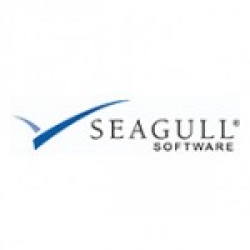A high performance distributed solution for curing mainframe integration headaches by transforming IMS transactions into SOA assets
ATLANTA on 19 December 2006
Seagull Software (AEX: SEAGULL), a leading provider of high-performance solutions that transform legacy business applications into service-oriented architecture (SOA) assets, announced general availability of the LegaSuite IMS Gateway – a new addition to the LegaSuite® platform of integration, user interface and workflow solutions for legacy applications.
Prior to this announcement, LegaSuite already supported 3270 screen-based IMS application integration, along with direct IMS transaction-based integration using IBM’s IMS Connect. LegaSuite IMS Gateway is a new method of integration directly to IMS transactions that does not require IMS Connect, nor the installation of any other software on the mainframe. The IMS Gateway means that customers have three methods for curing IMS mainframe integration headaches with LegaSuite.
“LegaSuite is designed to close the skills gap and enable existing development teams to accelerate their response to business demands in a SOA-compliant way. Customers have really embraced LegaSuite for rapid, scalable, reliable integration of IMS applications,” said Don Addington, CEO and president of Seagull Software.
“Now with LegaSuite IMS Gateway, we are offering even more options that give customers architectural flexibility as they SOA-enable important IMS applications.”
Some of the solutions’ features include:
- IMS transactions can expose industry standard interfaces such as XML, Web services, (WSDL), Java Command Beans and .NET assemblies with no changes to the IMS code.
- Distributed architecture means XML parsing and soap handling is performed 100% off the mainframe – available platforms include Unix, Linux on Intel and Linux on z/Series, Intel and Windows.
- Eclipse-based workbench designed to be easily learned and used by existing development teams – get SOA results without having to learn the détails.
- No additional software required on the mainframe.
For more information, go to:
www.seagullsoftware.com/products/ims.html
About Seagull Software
Seagull Software specializes in technology that transforms “legacy” applications into SOA-compliant Web services, helping enterprises achieve exponentially faster IT support for business change, governance and compliance. Our LegaSuite® software platform includes integration, GUI, BPM and terminal emulation technology. With LegaSuite, customers connect legacy applications on IBM mainframe, VME mainframe, System i5, UNIX/VT and Windows client/server platforms to the Web, to other middleware and to newer-generations of applications such as portals, CRM and SCM. LegaSuite is based on open standards including Web services, XML, J2EE and .NET. Powerful and innovative tools require no coding, which means rapid results, reduced risk and no maintenance burden. Committed to providing the best customer experience in the industry, Seagull Software’s technology is in use in more than 8,000 business and government organizations worldwide, and by millions of end users. Seagull Software has direct operations in the United States, Canada, the Netherlands, UK, France, and Germany, supplemented by distributors serving approximately 30 additional countries. For more information, visit www.seagullsoftware.com.
NOTE TO EDITORS: The correct usage of our company name is Seagull Software.
Forward-Looking Information:
All statements in this press release which address operating performance, events or developments that we expect or anticipate will occur in the future, including statements expressing general optimism about future operating results and non-historical information, are forward-looking statements. These forward-looking statements are, and will be, based on management’s then-current views and assumptions regarding future events and operating performance. Forward-looking statements are subject to certain risks and uncertainties that could cause actual results to differ materially, including, but not necessarily limited to management’s ability to manage growth, and hire and retain qualified employees; unpredictable customer demand; intense competition; rapid technological change; unpredictable market acceptance of new products; and market instability and/or reduction in software purchasing caused by exceptional circumstances.

